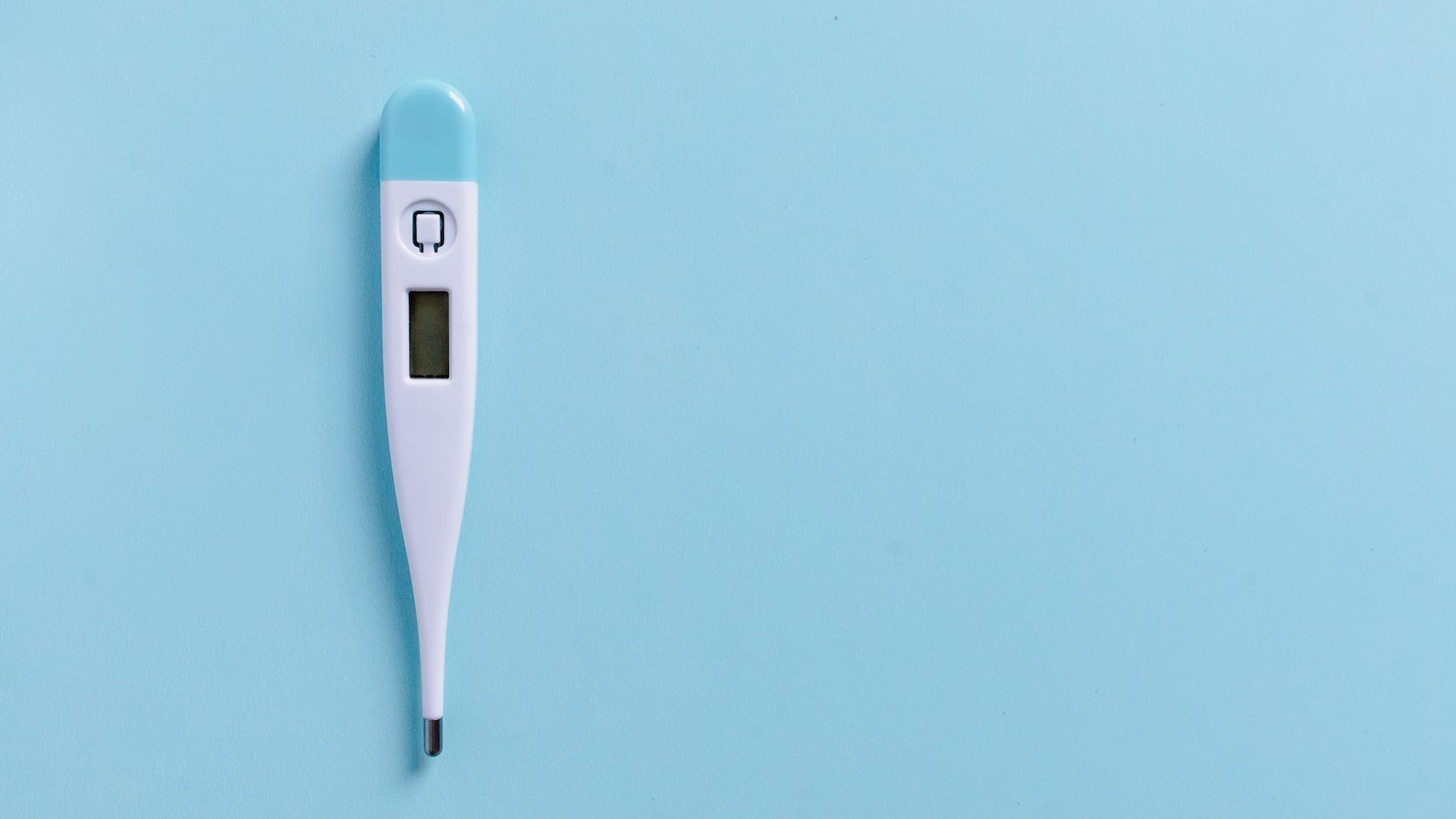Body Temperature & Hypothyroidism: Understanding the Connection and Hormonal Influences
Jul 31, 2023
Hypothyroidism is a treatable and fixable medical condition where the thyroid gland doesn't produce enough thyroid hormones, primarily thyroxine (T4) and triiodothyronine (T3). These hormones play a crucial role in regulating the body's metabolism, which affects various physiological processes, including body temperature. How and why does this happen?...
- Reduced Metabolism: Thyroid hormones act as the body's "metabolic regulators." They help control the rate at which cells convert nutrients into energy. In hypothyroidism, the deficiency of these hormones slows down the body's metabolic rate.
- Heat Production: Metabolism generates heat as a byproduct. This heat production helps maintain the body's temperature within a narrow range, around 98.6°F (37°C). When metabolism decreases due to low thyroid hormones, there is less heat generated by cells, leading to a drop in body temperature.
- Impaired Thermoregulation: The body has a complex system called thermoregulation that helps maintain a stable internal temperature. It involves interactions between the hypothalamus (a part of the brain) and various organs, blood vessels, and sweat glands. Thyroid hormones influence this process by affecting the hypothalamus' temperature-regulating functions. In hypothyroidism, this system can become less efficient, leading to difficulty in maintaining a normal body temperature.
As a result of these factors, people with hypothyroidism may experience symptoms such as feeling cold all the time, especially in their hands and feet. They might also have a lower-than-average body temperature, which can be measured using a thermometer. While low body temperature is a common symptom of hypothyroidism, it's not the only one. I list over 30 signs and symptoms in my book The Paleo Thyroid Solution. Some other signs include fatigue, weight gain, dry skin, hair loss, and muscle weakness.
Humans should have an average afternoon body temperature of 98.6°F. Although our bodies go through fluctuations in temperature throughout the day based on activity, illness, weather, etc., the internal thermostat for humans is set at 98.6°F.
• Normal basal body temperature range (immediately upon waking without getting out of bed) should be between 97.8°F and 98.2°F.
• Healthy mid-afternoon body temperature (around 3:00 p.m.) is 98.6°F.
Many hypothyroid sufferers have a lower than normal body temperature (below 97.8°F as a basal temperature and below 98.6°F in the afternoon). Hyperthyroid sufferers have higher than normal temperature (basal temperature consistently at top of basal range 98.2°F/98.3°F and an afternoon temperature consistently above 98.6°F).
When I was seriously hypothyroid, my body temperature was 96°F on most days and never reached 98.6°F until I was optimized on thyroid hormone replacement.
When I was hyperthyroid, my basal temperature was around 98.3°F and my afternoon temperature was 99°F. After reducing my thyroid hormone replacement, temps returned to normal.
Not only can assessing body temperature help with diagnosing hypothyroidism, it can also be used to gauge whether or not you are on the optimal dosage of thyroid hormone replacement (i.e., if you have been on thyroid hormones for a while but your afternoon temperature never reaches 98.4°/98.6°F, you might need more thyroid hormones).
NOTE FOR MENSTRUATING OR OVULATING WOMEN.
Body temperature typically increases during the female menstrual cycle at ovulation. This phenomenon is known as the "Basal Body Temperature (BBT) shift." Basal Body Temperature refers to the body's lowest resting temperature, which is usually measured in the morning after waking up, before engaging in any physical activity or even getting out of bed.
During the first half of the menstrual cycle, the follicular phase, estrogen levels rise as the ovaries prepare to release an egg (ovulation). This increase in estrogen contributes to a slight decrease in BBT.
However, after ovulation occurs, during the luteal phase of the menstrual cycle, the ruptured follicle transforms into the corpus luteum, which produces progesterone. Progesterone causes a rise in BBT, often by about 0.5 to 1.0 degrees Fahrenheit (0.3 to 0.6 degrees Celsius). This temperature increase is sustained until the beginning of the next menstrual cycle, whether pregnancy occurs or not.
Because your body temperature shifts with monthly hormonal changes, making it lower or higher than normal. If you are still in the window of being a menstruating or ovulating female - check and track temps before day 14 of your cycle, with “day 1” being the day you started your period.
TEST YOUR BASAL BODY TEMPERATURE
1. Get one of the following: an old-school mercury thermometer or a Geratherm thermometer. (Geratherm is an alternative to the mercury thermometers—digital thermometers may not be as reliable, but I have found the digital KINSA thermometer reliable.
2. Place thermometer within arm’s reach of your bed.
3. Upon waking in the morning, before sitting up or leaving your bed, put the thermometer under your tongue and relax for seven to ten minutes. Yes, this is a long time, but it will ensure an accurate temperature reading (you may not need to do the 5-10 minute
4. Remove the thermometer and record your temperature.
TEST YOUR MID-AFTERNOON BODY TEMPERATURE (AROUND 3PM)
1. Get one of the following: an old-school mercury thermometer, GERATHERM thermometer (mimics old school mercury thermometer), or a could digital thermometer like KINSA.
2. Sit quietly for at least fifteen minutes before taking your temperature.
3. Don’t eat, drink, smoke, or exercise, during this time.
4. Sit comfortably and put the thermometer under your tongue for a solid seven to ten minutes.
5. Remove the thermometer and record your temperature.
If your basal temperature is consistently below 97.8°F and/or your mid-afternoon temperature is consistently below 98.6°F:
• It’s indicative of hypothyroidism.
• If you are already on thyroid hormone replacement, you may not be on the right dosage, the right type/combination of thyroid hormones, or the T4 is not converting into T3 (Reverse T3).
• Wacky adrenals, low iron, and/or poor food choices are issues keeping you hypothyroid.
If your basal temperature is consistently 98.2°/98.3°F or above and/or your mid-afternoon temperature is above 98.6°F:
• Your thyroid gland could be dispensing too much thyroid hormone (hyperthyroidism).
• You might be on too much thyroid hormone replacement, which is causing you to be hyperthyroid.
• You might have low iron, low aldosterone, or low estrogen.
• Adrenal issues: you might be producing too much adrenaline (manifests as anxiety attacks, feeling jittery/shaky, and/or heart palpitations).
WHAT ABOUT PEOPLE WHO HAVE DIFFERENT SLEEP AND WORK SCHEDULES?
The basal temperature will still be taken upon waking, whenever you wake. The "afternoon" temperature will be whatever that means for you. If you normally wake up at 11am....then you might want to test your "afternoon" temp around 7pm.
The good news is - hypothyroidism is treatable and once it is treated correctly...all hypothyroid symptoms (including body temperature issues), resolve.
About the author: Elle Russ is a #1 bestselling author, world-renowned thyroid health expert, and master coach. Take her Thyroid Masterclass HERE
Sign Up For My Newsletter!
I hate SPAM. I will never sell your information, ever.

